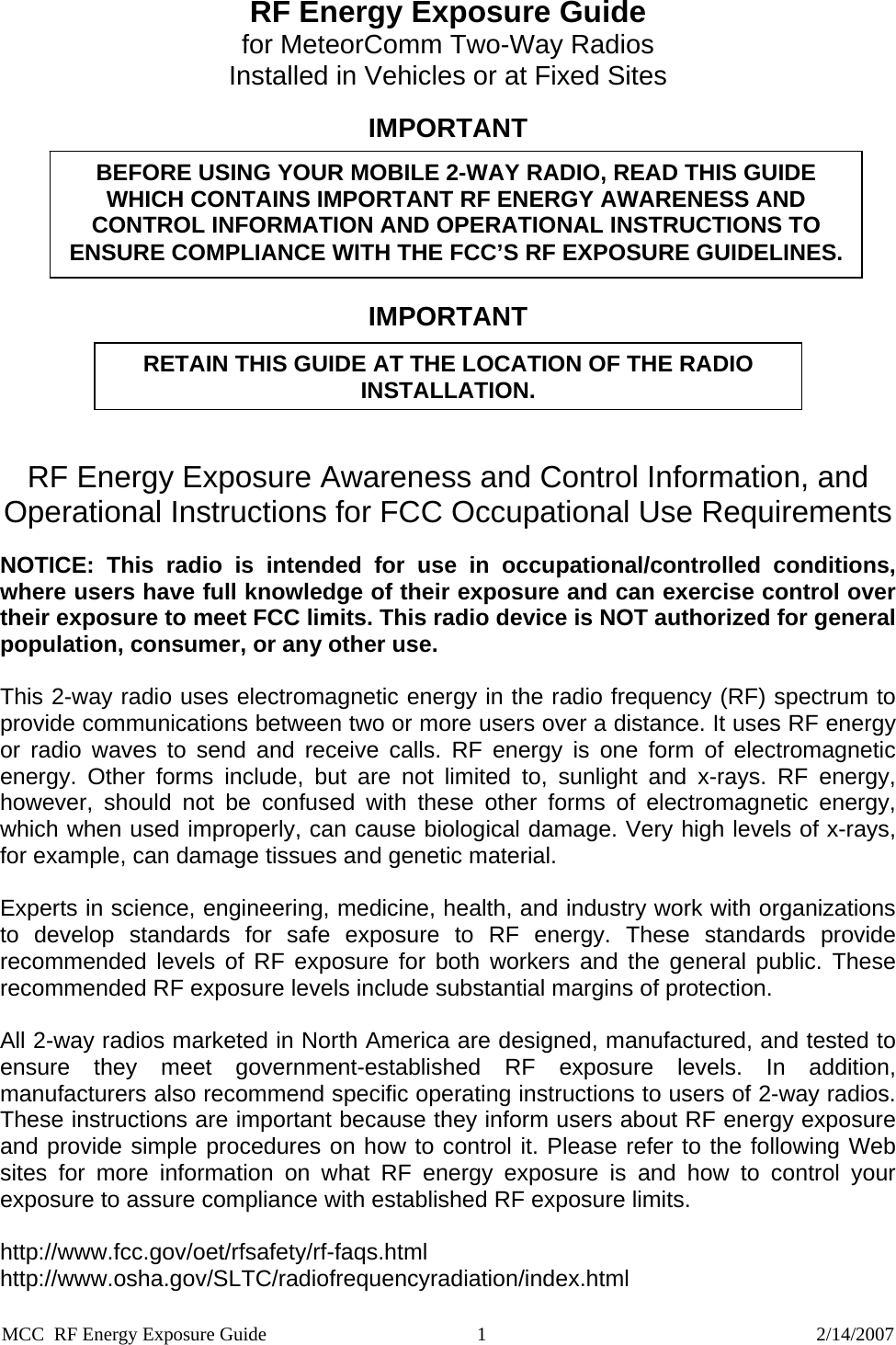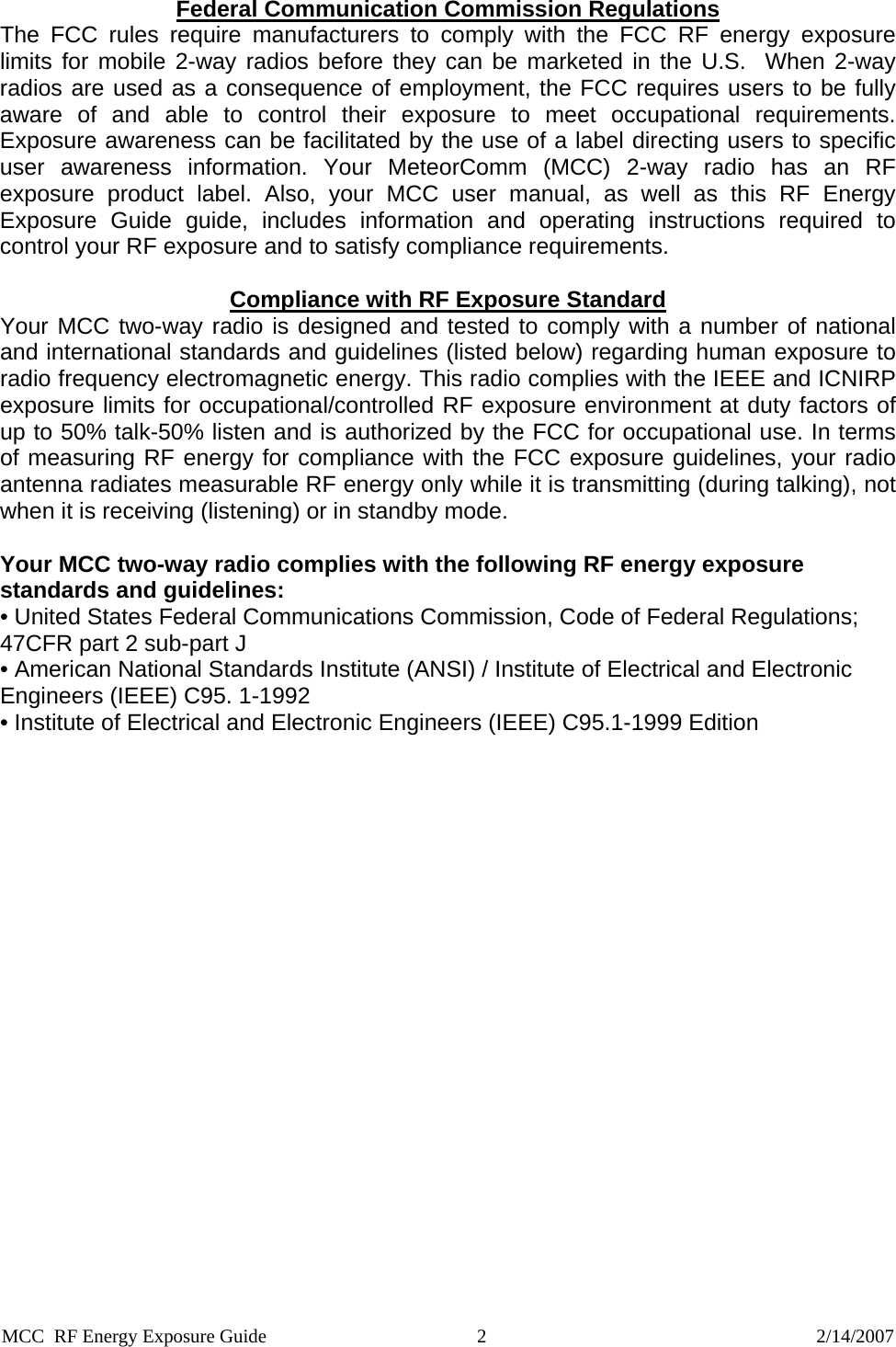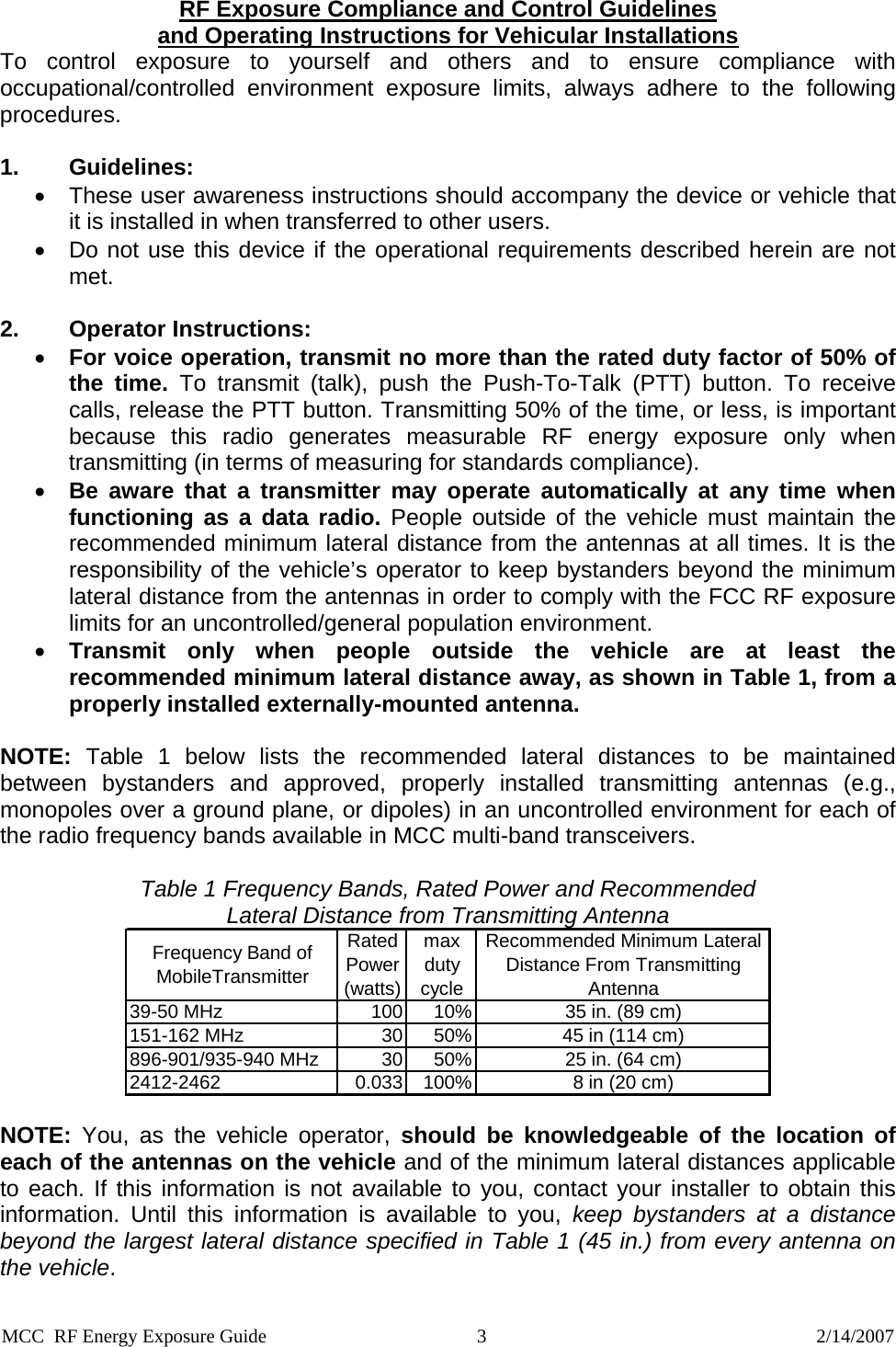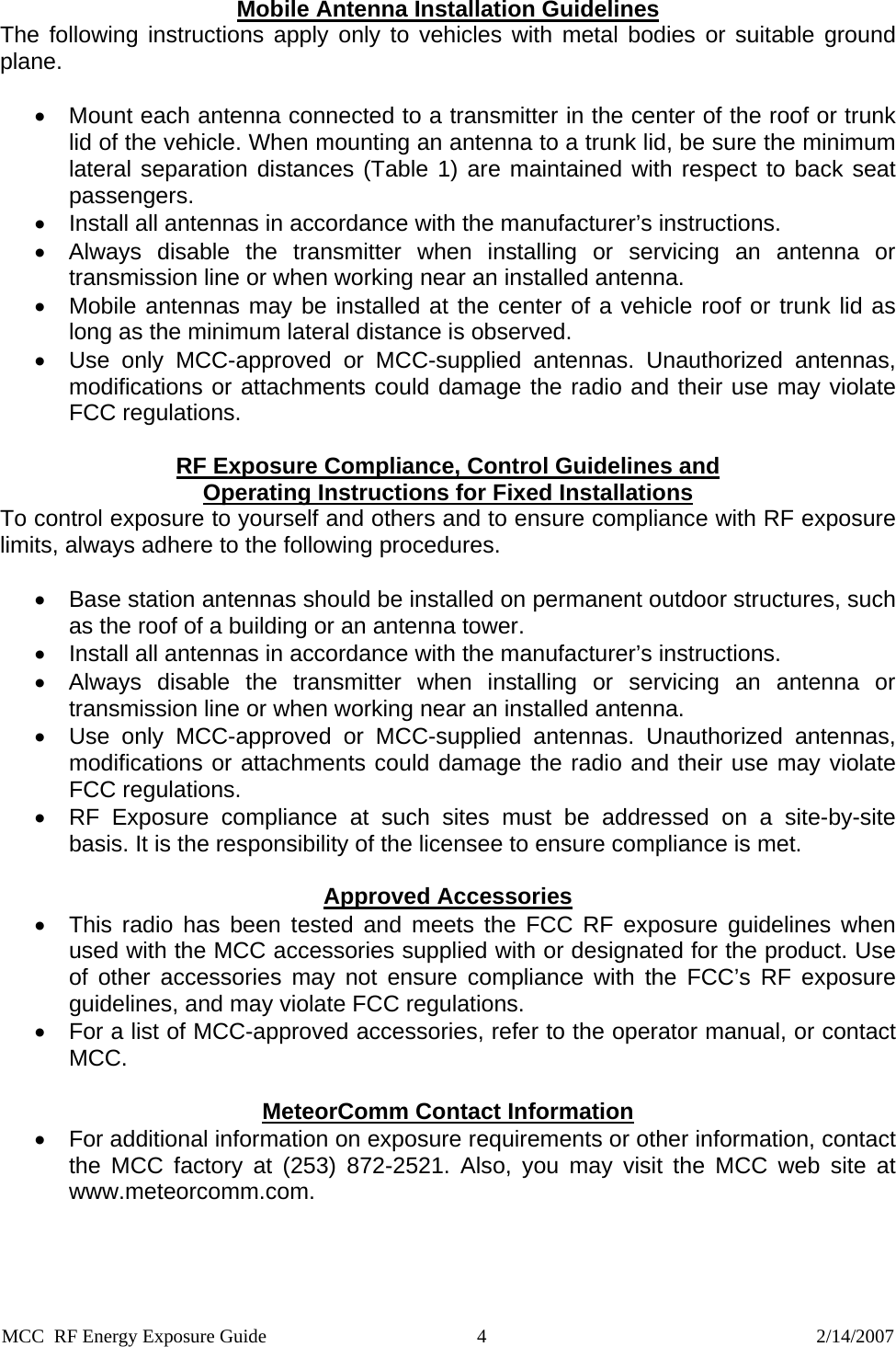Meteorcomm 61201001 Land Mobile Packet Data Transceiver User Manual RF Exposure Guide
Meteorcomm LLC Land Mobile Packet Data Transceiver RF Exposure Guide
Contents
- 1. Users Manual Prelim
- 2. Amended Operating Manual
- 3. RF Exposure Guide
RF Exposure Guide



